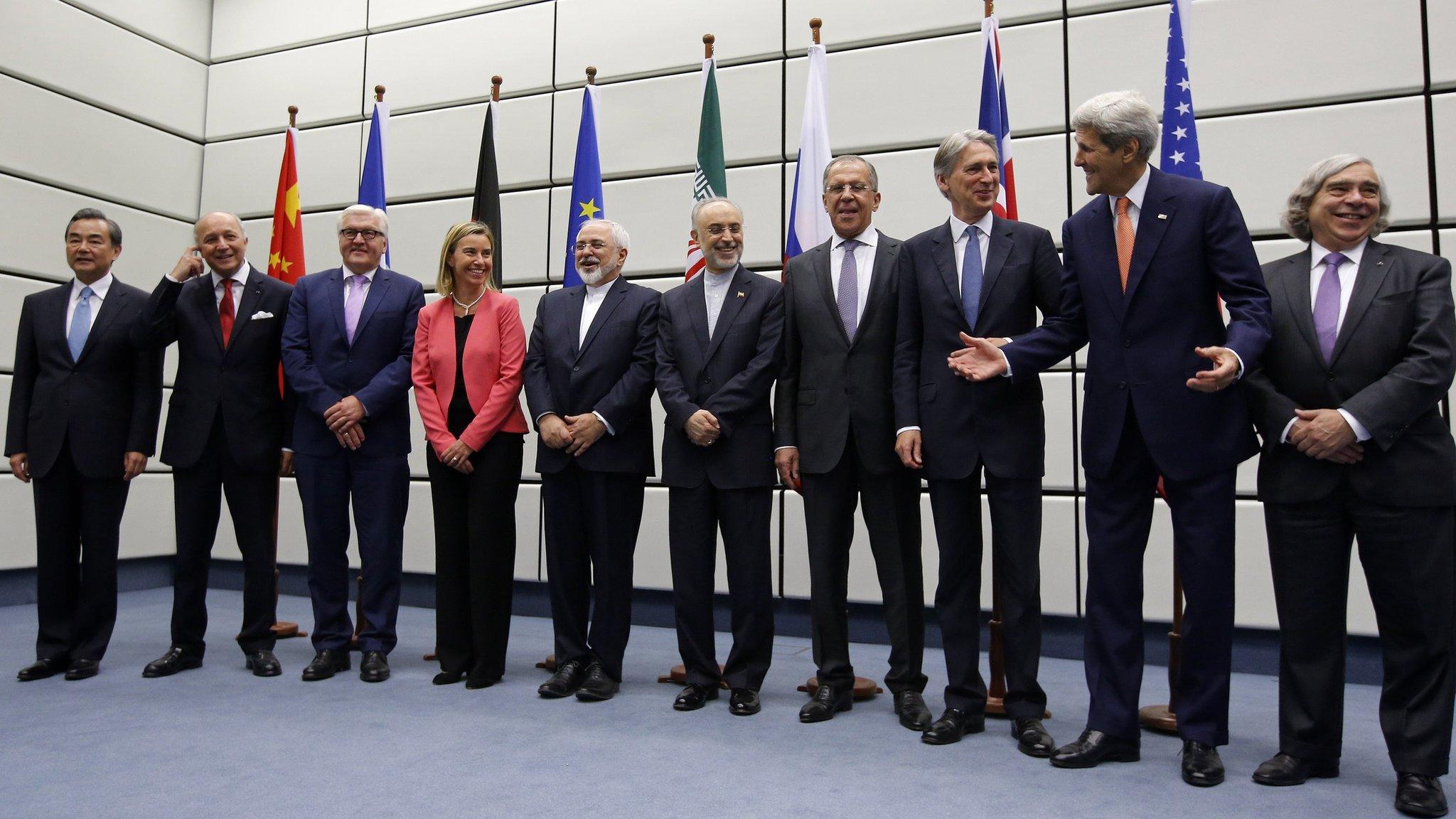US military 'losing its competitive edge'
- Published
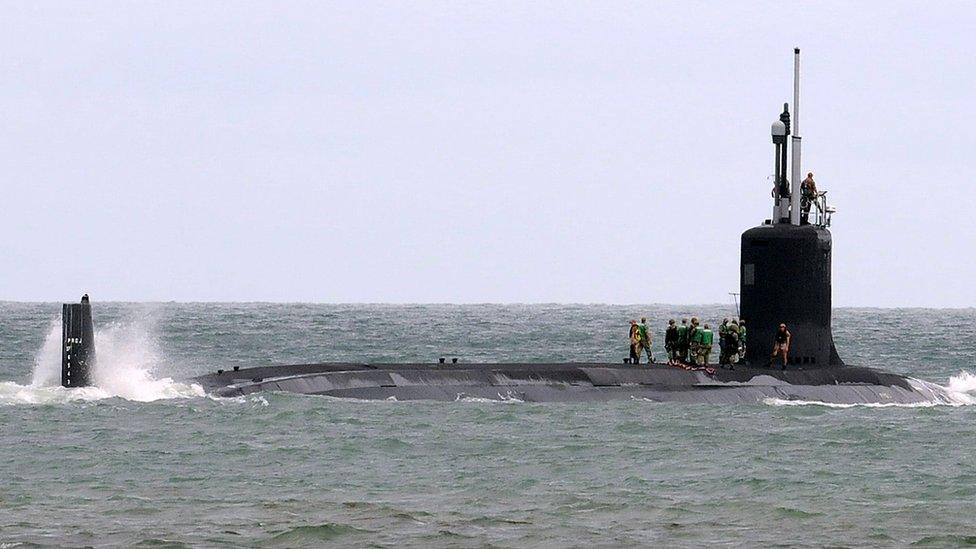
The US Navy needs to expand its submarine fleet, the report recommends
A panel of experts has issued a hard-hitting and sober assessment of US President Donald Trump's National Defense Strategy.
"The global role the United States has played for many generations rests upon a foundation of unmatched military power," its report says.
"Today however, our margin of superiority is profoundly diminished in key areas."
"There are," the study insists, "urgent challenges that must be addressed if the United States is to avoid lasting damage to its national security."
The National Defense Strategy Commission was tasked by Congress to give an independent, non-partisan review, external of the Trump administration's defence strategy. It was chaired by Eric Edelman, a former Pentagon official in George W Bush's administration, and Admiral Gary Roughead, a former chief of naval operations. These are insiders who know their way around a defence budget, as well as the corridors of the Pentagon.
"The security and wellbeing of the United States are at greater risk than at any time in decades," the report asserts. "America's military superiority has eroded to a dangerous degree."
President Trump's arrival in office coincides with a far-reaching shift in US military priorities - away from counter-insurgency operations and the war on terror, towards a new focus on potential conflict against so-called peer competitors like Russia or China.
Even non-peer competitors like Iran and North Korea are presenting new and dangerous challenges.
The implications are enormous for the US military. In places like Iraq and Afghanistan, for example, they have been operating in environments with no threat to US forces from the air, and no significant challenges (beyond geography) to their ability to communicate, to use GPS and so on.

The US is facing a more robust Chinese presence in the South China Sea
Meanwhile potential opponents - like China and Russia - have been studying the US military and continuing to modernise their own forces building both on their traditional strengths while also exploring ways of countering the US in areas where it was once dominant.
Indeed, Moscow's intervention in the war in Ukraine demonstrated the extraordinary destructive power of Russian artillery linked to sophisticated electronic warfare capabilities, both to find, fix and destroy Ukrainian armour and also to mask the location of Russian forces.
In many of these areas the US has a lot of catching up to do. That means retraining and re-equipping, but it is much broader than that. It requires a massive effort to bolster innovation and to forge ahead with key technologies - artificial intelligence, next generation broadband networks and so on - that may provide a key element of superiority on a future battlefield.
This report makes cautionary reading. If there was to be a grade given for the Pentagon's existing plans, on my reading of the document it would get a solid B minus. Lots of good intentions and some sense of the major challenges but muddled thinking on how to address them, and fundamentally not enough resources to get the job done.
There are more than 30 detailed recommendations. Here are just some of the most important - summarised and selected to give a sense of the scope of the document:
Focus spending on action by the US and its allies against China in Asia and against Russia in Europe
Reduce the risk of dangerous dependency on components coming from abroad, eg China
Maintain the US military presence in the Middle East, even after the defeat of the Islamic State group
Enlarge US forces so they can fight two wars, as they are currently only capable of fighting one
Provide more tanks, long-range rockets and artillery
Create more engineering and air defence units
Expand the US Navy's submarine fleet and dramatically expand its sea-lift forces
Provide the US Air Force with what it needs - pretty much more of everything
Maintain the US Marine Corps at no less than its current size
This report cuts through much of the bombast in which President Trump has clothed his national defence strategy. But this is by no means a revolutionary document in so far as it shares the basic strategic outlook that underpins current Pentagon thinking. It points out where the official plans are ill-formed or incoherent. It is a call for more military spending but also a call for more coherent budgeting. And it usefully underscores the scale of the task.
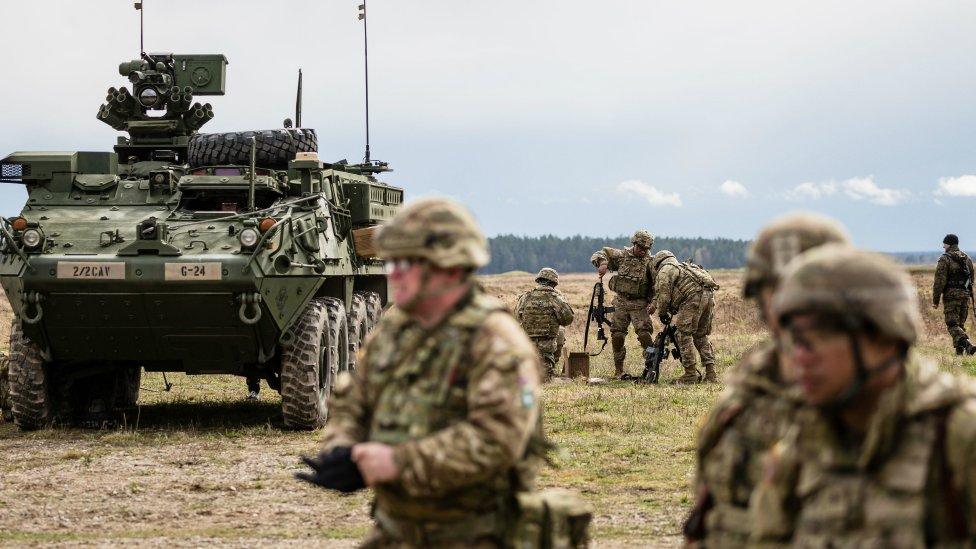
US troops form part of Nato's deployment in Europe
This is enormous. The US military is not a hollow force by any means. But getting back into the business of high-end warfare will be costly. Old skills have to be re-learned. New challenges analysed and addressed. The commission report envisages the US remaining a major military actor across the globe in Europe; in the Asia-Pacific and in the Middle East. Where is there slack that can be cut?
But some of the fundamental problems lie outside the military in industry and in the wider sphere of diplomacy. The United States' long period of military dominance during the Cold War rested upon an extraordinary scientific and industrial base that nobody could rival. Advances from research in aerospace or other the military-related technology slowly diffused into civilian life.
Today things are very different. It is civilian research - in computing, electronics and crucial areas like artificial intelligence - that is driving forward technological progress. And the US - whilst a powerful player - is not alone. China in particular is placing huge resources into the technologies that may one day give it the edge on a 21st Century battlefield. Globalisation has entwined the US and Chinese economies in ways that could be detrimental to US security.
Rupert Wingfield-Hayes says China is determined to assert its control
Money needs to be spent more efficiently too. Weapons procurement programmes need to be leaner and faster, the path from technological breakthrough to weaponisation to be swifter and less institutionalised. The US outspends all of its major military rivals but is still not getting sufficient "bang for its buck".
Then there is the diplomatic aspect, too. The US does not train to fight alone; it does so with allies. President Trump has focused on just one aspect of this relationship: burden-sharing, the need to get Nato countries in particular to spend more on their collective defence.
But Mr Trump has alienated and offended allies by the way he has done this. The Atlantic alliance itself has been weakened politically even as more US forces have been deployed to Europe to shore up its defences against a resurgent Russia.
Alliance relations may recover once the Trump era passes. At the political level they need to be nourished and at the practical military level, steps have to be taken to ensure that US advances in technology do not make it harder for allied forces to operate alongside US units.
Perhaps the greatest challenge posed by this report is its call for the US to take a "whole government" approach to security. Both Russia and China, it notes, have strategies integrating all the tools of national power. The US needs to have the same approach.
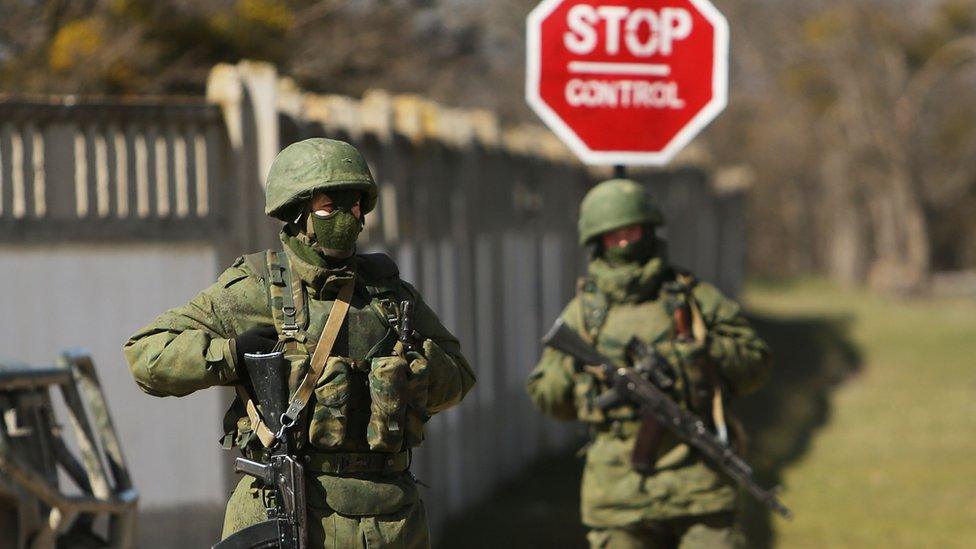
Russian troops without identifying insignia occupied Crimea in 2014
This is doubly important when the spectrum of threats is increasing.
We no longer live in a world where there is a clear distinction between peace and war. The space between these absolutes is filled with a variety of threats and irritants: information operations; political assassination; cyber attacks; and military activities by forces or proxies whose exact identity only becomes clear over time (think of the Russian troops operating as "the little green men" in the Crimea).
Confronting this new and complex spectrum of threats requires new strategy, new thinking and new tools. But it also requires a new mindset in government and that may be the hardest thing to achieve.
- Published3 October 2018
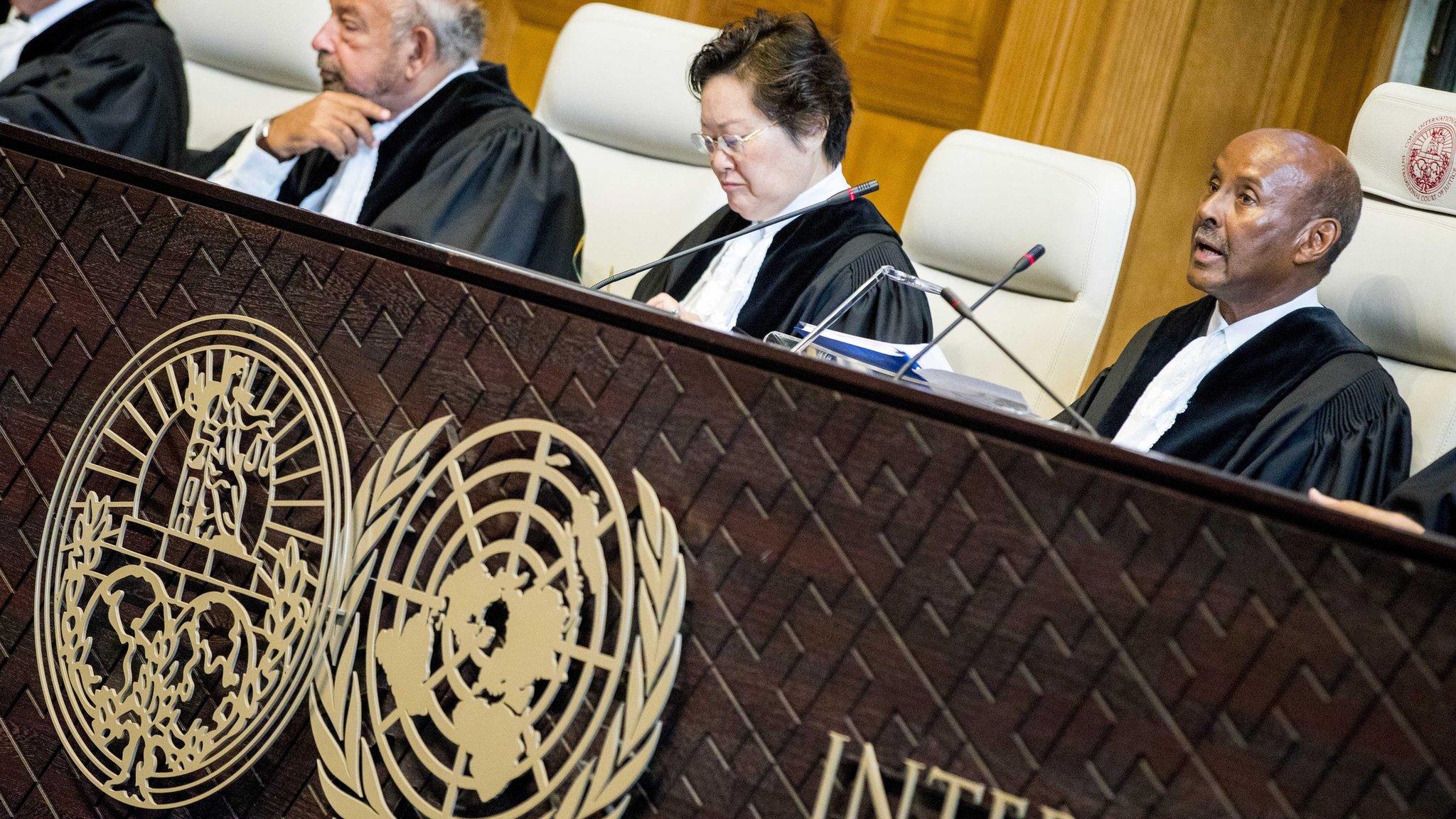
- Published23 November 2021
